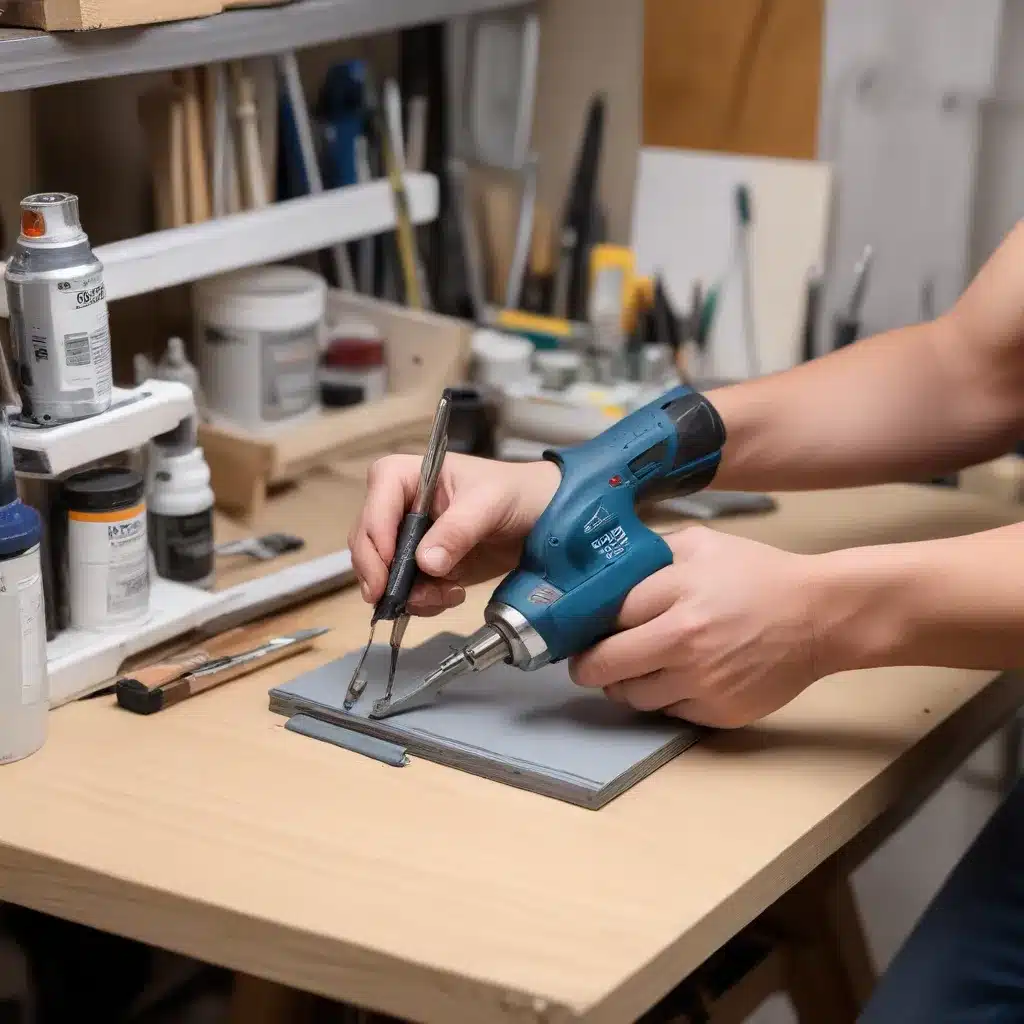
Optimizing Your Painting Workflow with Clever Accessory Tools
As an experienced home improvement consultant, I’ve seen firsthand the transformative power of a well-executed painting project. Whether you’re refreshing a single room or tackling a whole-home makeover, the right tools and techniques can make all the difference in streamlining your workflow and achieving professional-grade results. In this comprehensive guide, I’ll share my top tips for optimizing your painting process with smart accessory tools, strategic workspace organization, and time-saving tricks.
Accessory Tools for Efficiency
The key to a smooth, productive painting session lies not just in the quality of your paints and brushes, but in the specialized accessories that can elevate your workflow. Let’s explore three essential categories of painting tools that can supercharge your productivity.
Brushes and Palette Knives
While standard paintbrushes are the workhorses of any painting project, consider incorporating specialty brushes and palette knives into your arsenal. Angled brushes excel at cutting in clean lines along edges and trim, while detail brushes allow you to precisely paint intricate patterns or access tight spaces. A palette knife, with its rigid blade and tapered edge, can be invaluable for smoothly blending colors, scraping excess paint, and even creating unique texturing effects.
Paint Mixing Trays
Mixing paint colors on the fly is a common necessity, but traditional palettes can quickly become unwieldy. Invest in a paint mixing tray with built-in wells and grooves to keep your color combinations organized and accessible. Some trays even feature built-in scrapers or mixing paddles to simplify the blending process. When working with acrylics or water-based paints, opt for a tray with a water-soluble silicone surface for easy cleanup.
Portable Easels
If your painting project involves large canvases or wall surfaces, a sturdy portable easel can be a game-changer. These adjustable stands allow you to work at a comfortable, ergonomic height, reducing strain on your back and shoulders. Look for easels with locking casters for easy mobility around the room or job site, and consider ones with integrated storage compartments to keep your tools close at hand.
Workspace Organization
Beyond the right tools, a thoughtfully organized workspace can dramatically boost your efficiency and minimize frustration during a painting project. Here are some key considerations for optimizing your studio or workstation.
Storage Solutions
Keeping your paints, brushes, and accessories neatly stored and accessible is crucial. Invest in a paint storage cabinet or rolling cart with cubbies, shelves, and hooks to corral your supplies. For brushes, a vertical brush holder or magnetic strip can help you quickly locate the right tool for the job.
Lighting Considerations
Proper lighting is essential for accurately assessing color, detecting flaws, and maintaining a comfortable work environment. Position task lighting directly over your work surface to eliminate shadows, and use warm-toned bulbs to simulate natural daylight. Consider installing dimmable fixtures to adjust the brightness as needed.
Ergonomic Setup
Painting can be physically demanding, so prioritize an ergonomic workstation to prevent fatigue and strain. Adjust the height of your easel or tabletop to align with your elbow, and use a cushioned floor mat to reduce pressure on your feet and legs. Incorporate frequent breaks to stretch and recover.
Time-Saving Techniques
Mastering a few time-tested painting techniques can dramatically boost your productivity and efficiency, helping you achieve stunning results in less time.
Layering and Blending
Skillful layering and blending of paint can create depth, dimension, and seamless transitions. Experiment with wet-on-wet techniques, where you apply fresh paint onto still-damp underlying layers, to achieve soft, diffused edges. Utilize dry-brushing methods to selectively blend colors and build up subtle textures.
Masking and Stenciling
For crisp, clean lines and intricate patterns, masking tape and reusable stencils are invaluable tools. Apply tape along edges, trim, and moldings, then paint up to the barrier for a professional finish. Custom stencils can transform a simple wall or furniture piece into a work of art.
Color Matching Strategies
Achieving the perfect custom color can be a time-consuming process, but there are tricks to streamline the task. Keep a color mixing journal to document successful formulas, and use color comparison cards to quickly assess how different paint colors interact. For large-scale projects, consider investing in a digital color-matching tool to precisely replicate hues.
Digital Integration
In today’s technology-driven world, seamlessly integrating digital tools and resources can elevate your painting workflow to new levels of efficiency and precision.
Tablet and Stylus Integration
If you’re comfortable with digital painting, consider using a graphics tablet and stylus to plan color schemes, experiment with designs, and even create digital mockups. The portability and precision of these tools can be a game-changer, allowing you to fine-tune your vision before ever picking up a physical brush.
Photo Reference Management
Maintaining a comprehensive photo library of your painting projects can be invaluable for future touch-ups, color matching, and design inspiration. Utilize cloud-based storage services to access your photo references from anywhere, and leverage image editing software to annotate, filter, and organize your visual assets.
Workflow Automation Tools
Streamline repetitive tasks and eliminate manual errors with the help of workflow automation tools. For example, color calculation apps can quickly determine the precise amount of paint needed for a room, while project management software can help you stay on top of timelines, budgets, and task assignments.
By incorporating these strategic accessory tools, workspace organization tactics, and time-saving techniques into your painting workflow, you’ll unlock new levels of efficiency, precision, and creative expression. Whether you’re tackling a DIY home project or working as a professional painter, these insights will help you optimize your process and deliver outstanding results. For more inspiring home renovation ideas and practical tips, be sure to visit https://www.reluctantrenovator.com.



